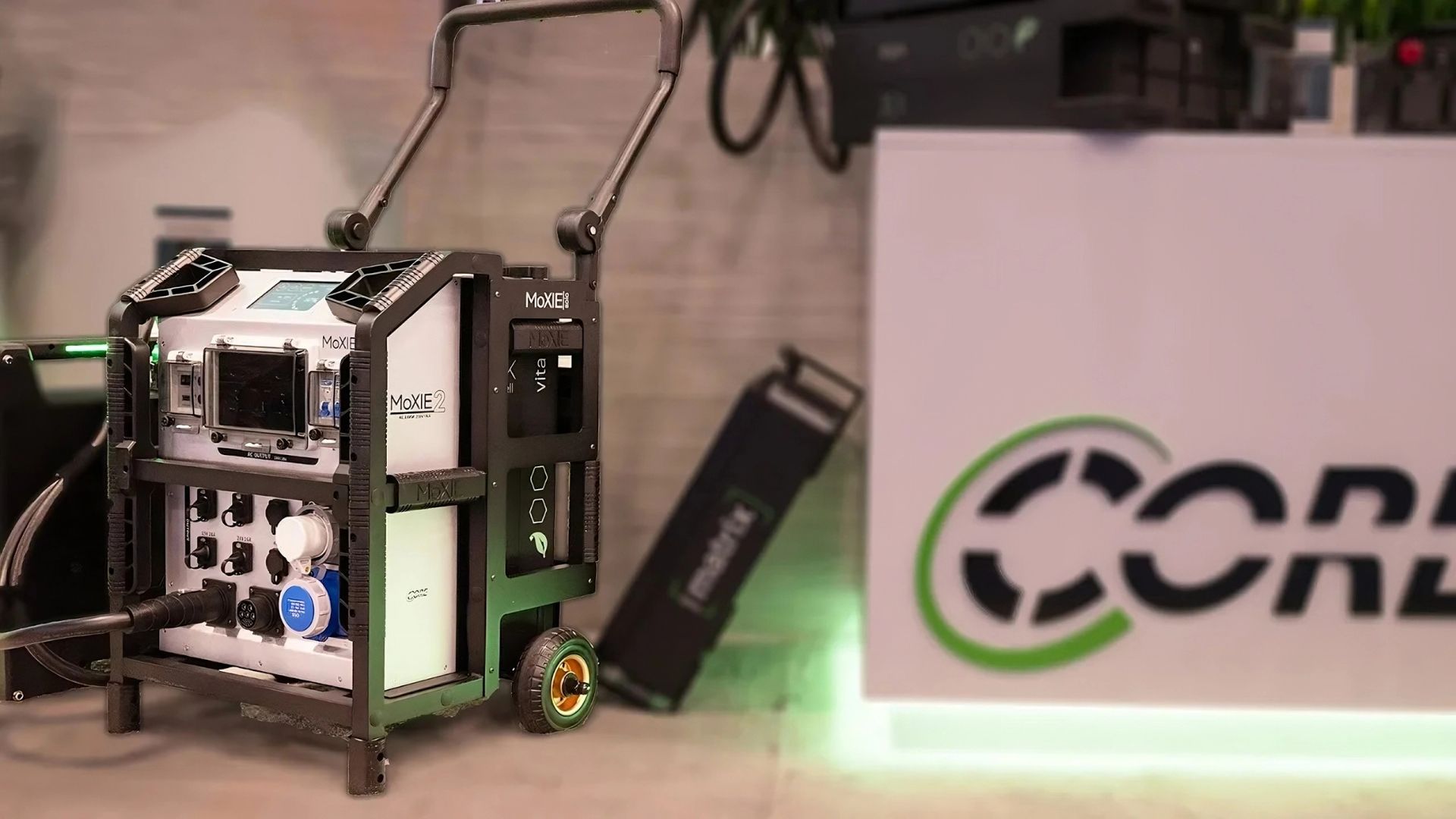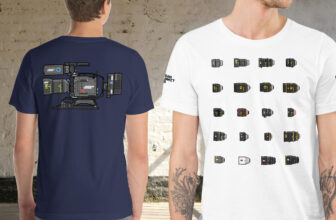
Check out our latest products
During NAB 2025, we had a first look at the Core SWX MoXIE Solo battery system and talked with Ross about all of the improvements they made and the new accessories for the system. So, let’s take a closer look at it!
American battery manufacturer Core SWX is well-known for closely listening to their customers and continuously coming out with new products that solve “real-life” on-set issues. During NAB 2025, the company announced the Nano M-Snap battery packs with USB-C PD and their latest 98Wh Powerbase Edge Snap Xtreme.
Aside from making compact camera/camera accessory powering solutions, Core SWX is also making way larger mobile power solutions, such as the MoXIE Solo, which they showcased at last year’s Cine Gear. After sending multiple units on the field and gathering users’ feedback, Core SWX returned to the drawing board and vastly improved the MoXIE Solo.

Core SWX MoXIE Solo – features
The MoXIE Solo, which means “Mobile, eXchangeable, Intelligent Energy,” is a 3.6 kWh portable powering solution that consists of two main components: a brain with a touchscreen and all the power outputs, and external batteries. Three versions of the brain are available:
- MoXIE 1: AC 3.6 kWh -120V – 30 amp, for the US market.
- MoXIE 2: AC 3.6 kWh – 230V – 16 amp, designed for the European/UK market.
- MoXIE 3: AC 3-phase – 208V – 10 amp, primarily designed to power robotic arms.

All three MoXIE variations use the same cells and have a maximum output of 3.6 kWh. Also, a Sync Module allows you to run two units in parallel to double the current out, so you can get up to 7.2 kWh out of the MoXIE Solo system. The MoXIE Solo can even achieve up to 9 kWh of power when three Vita Cell packs are connected.
Two kinds of battery cells are available: a 3kWh LiFePO4 Vita Cell and a 2kWh Kodiak Sodium Ion Cell. The Kodiak cell was the first sodium-ion 2kWh product on the market, and the main advantage is that sodium operates down to minus 40°C without needing any warmup. Both cell packs feature LED indicators and Core’s LED light bar for clear and easy-to-read battery status.

The front of the MoXIE Solo brain features multiple AC and DC at different voltages, including:
- One 20A AC input (120 or 230V) that can charge the unit in less than 2.5 hours.
- Two 15V/16A 4-pin XLR, two 28V/16A 3-pin XLR, and two 48V/16A speakON DC outputs.
- Three AC outputs.
- Two 15V/10A P-Tap outputs.
- Two USB-C PDPro and one USB-A port.

The idea behind the MoXIE Solo is to replace “traditional” gas-powered smaller 2K/3K/5K/6.5 kWh generators. The main advantage of the MoXIE Solo compared to power generators is that the brain cage without the cells weighs “only” 65lbs/29.5kg, and the cells are around 62lbs/28.1kg, with dimensions of 16″ x 17″ x 24″/40 x 43 x 61cm.

This system is relatively light compared to a 229lbs/104kg Honda 6.5 kWh generator. Also, the MoXIE cell system is modular because you don’t have to “refuel the tank”, as you can hot-swap battery cells.
Furthermore, the MoXIE Solo is completely silent during discharge, which will please the sound department on set. The system also has a Power Priority feature, meaning that if you exceed 3.6 kWh, you can prioritize AC or DC running on the touchscreen.

What’s new?
The first noticeable change of the Core SWX MoXIE Solo system is the new aluminium frame/cage around the brain. The new modular build makes replacing parts easier if you bend the cage. The brain can roll, and you have three different wheel options available: 6/8/10″.
Next, Core SWX expanded the system with multiple new accessories:
- A Transporter Cage lets you put two battery cells next to the cage.

- The Matrix System is an external box that stacks within the cells and provides AC outputs. It also has two battery inputs, so you can continuously hot swap. The Matrix System is designed for seamless power distribution, enabling MoXIE Cells to operate independently and deliver clean, uninterrupted AC power.

- The MoXIE Flex Charger. This is an external charger capable of charging the 2 kWh Kodiak Sodium Ion Cell in 1 h 15min and the 3 kWh LiFePO4 Vita Cell in 2 h 30min.
- MoXIE Sync Module to link two MoXIE I/O cages and double the current output for high-demand applications.

Pricing and availability
The MoXIE Solo brain without cells retails for $6,499. The 3kWh LiFePO4 Vita Cell retails for $3,000, and the 2kWh Kodiak Sodium Ion Cell is $2,499. The external charger costs $1,500, the Transporter Cage costs $929, and the MoXIE Matrix costs $3,000. As you can tell, the MoXIE Solo is mostly a rental system.
For more information, please visit Core SWX’s website here.
What do you think about the MoXIE Solo? Do you often use power generators, or do you prefer smaller battery systems? Don’t hesitate to let us know in the comments below!

![[2025 Upgraded] Retractable Car Charger, SUPERONE 69W Car Phone Charger with Cables Fast Charging, Gifts for Men Women Car Accessories for iPhone 16 15 14 13 12, Samsung, Black](https://i1.wp.com/m.media-amazon.com/images/I/61SaegZpsSL._AC_SL1500_.jpg?w=300&resize=300,300&ssl=1)



![[True Military-Grade] Car Phone Holder【2024 Stronger Suction & Clip】 Universal Cell Phone Holder for Car Mount for Dashboard Windshield Air Vent Long Arm Cell Phone Car Mount Thick Case,Black](https://i2.wp.com/m.media-amazon.com/images/I/715PBCuJezL._AC_SL1500_.jpg?w=300&resize=300,300&ssl=1)
![[エレコム] スマホショルダー ショルダーストラップ 肩掛け ストラップホールシート付属 丸紐 8mm P-STSDH2R08](https://i3.wp.com/m.media-amazon.com/images/I/51BMFf06pxL._AC_SL1500_.jpg?w=300&resize=300,300&ssl=1)







